MARC HONIKEL

Expert insights into the latest tech and emerging trends in the global defence sector.




















Expert insights into the latest tech and emerging trends in the global defence sector.


















Welcome to the March edition of INNOVATION Magazine! pring is in the air – a season of growth, rejuvenation and optimism. Set against this buoyant backdrop, it is my absolute pleasure to announce that our new website has launched!

SWe’ve rebuilt INNOVATION’s digital home from the ground up, so we can serve you the latest and greatest tech news, features and interviews even better. I’m incredibly grateful to everyone involved – thank you.
But now, back to the magazine. We have a stellar lineup for you this month and are thrilled to share some cracking features and an exclusive interview with you for our March edition.
In our cover interview, I have the pleasure of chatting with Marc Honikel, PhD, Chief Innovation Officer at defence systems manufacturer Rheinmetall. Marc shares his expert insights and personal perspectives on the technology, trends and innovations which are key to the defence sector’s continued success (p6).
In our global tech features this month, we cover Deloitte and Basware’s expanded partnership (p28), six femtech startups to watch (p40), the role of extended reality in the energy transition (p50), how SHINE Technologies’ latest funding will help reduce the impact of used nuclear fuel (p62), profiling the companies in Google’s AI for Cybersecurity Cohort (p72), and exploring insights from Info-Tech Research Group about the future of IT strategy (p84).
Last but by no means least, our Startup of the Month is Vendr – the SaaS buying platform streamlining pricing negotiations to empower buyers (p98).
We hope you enjoy our latest edition. As always, if you would like to be considered as an interviewee or if you have a story for us, please do get in touch. Contact us at editorial@ithink.media or connect with me on LinkedIn.
Thought leadership: Marc Honikel, PhD, on industry responses to globally emerging trends in the defence sector

Deloitte and Basware ‘Center of Excellence’

Discover the six femtech startups reshaping women’s health
create

50 Will extended reality tech redefine the energy transition?

How SHINE Technologies is reducing used nuclear fuel’s impact

Take a deep dive into the 2025 Google for Startups Growth Academy cohort 72

98 Meet Vendr, our Startup of the Month
Info-tech’s top priorities for IT application strategies
Marc Honikel, PhD, Chief Innovation Officer at defence systems manufacturer Rheinmetall, sits down with us to share his personal views on the latest innovations and industry responses to globally emerging trends in the defence sector.
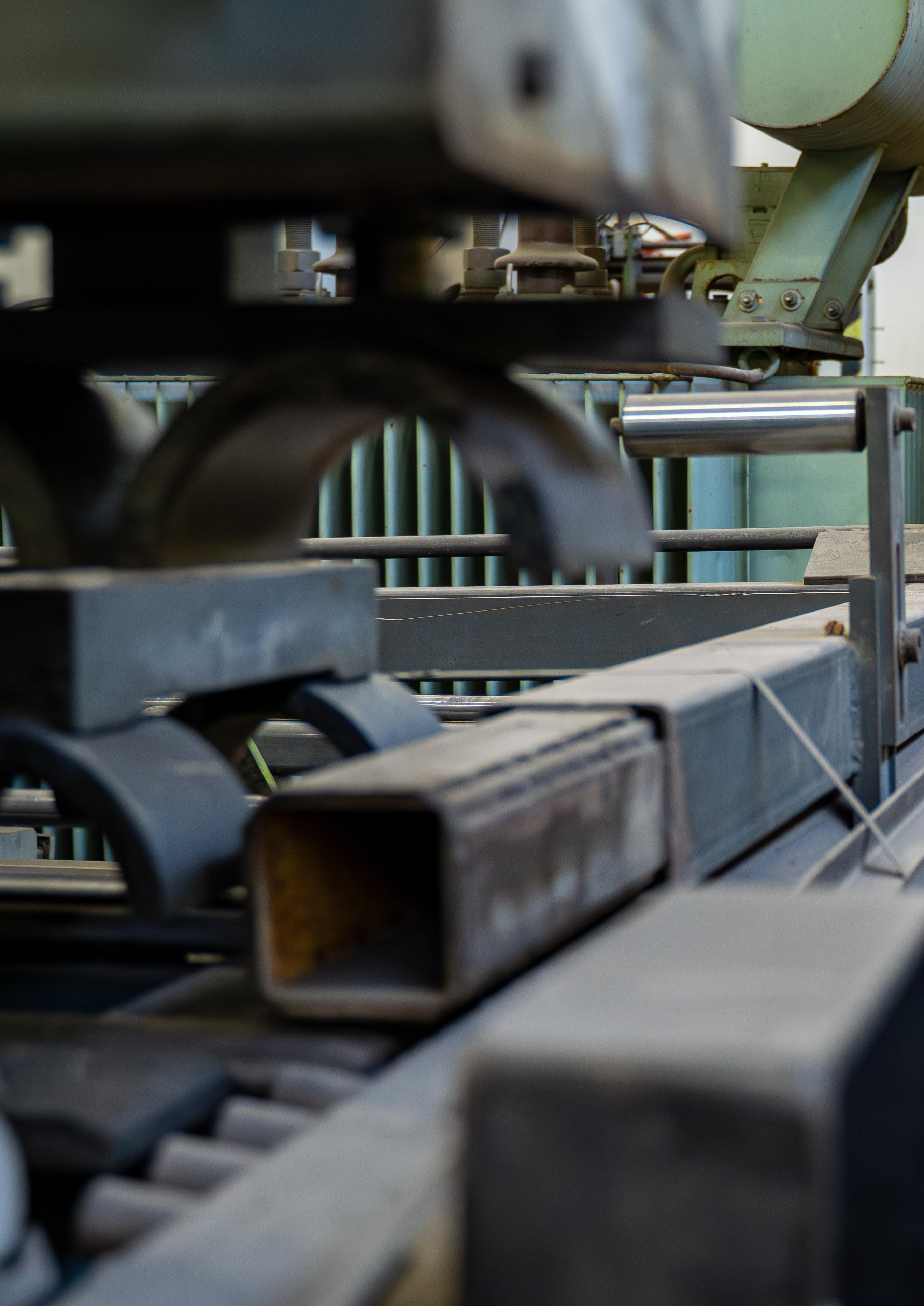

Global defence manufacturers must balance and integrating technological expertise that them to address long-term megatrends – while simultaneously identifying viable new markets high growth potential and developing innovative solutions for a safe and liveable future.
Joining us today for an exclusive interview is Marc Honikel, PhD, Chief Innovation Officer at Rheinmetall Air Defence. Marc discusses his thoughts on the latest emerging trends in the defence sector and shares his expert insights into the innovation and technologies key to the industry’s continued success.
To begin, Marc highlights the latest developments in air defence technology
“As the whole defence industry, air defence is enjoying a real renaissance at the moment,” says Marc. “In the wake of the conflict in Ukraine, we’ve seen large numbers of drones causing threats to society, critical infrastructure and defence formations.
“Actually, this perceived new type of threat is not that new at all. Unmanned aerial vehicles have been around for a while, but in the last ten years the proliferation of smaller drones has increased drastically. Affordable technology has led to the widespread use of drones in conflicts both from state and non-state actors. These drones act in multipurpose roles such as reconnaissance and weaponised attack. And this applies to all domains, air, land and water.
“The 2020 Karbach war highlighted the growing role of drones in modern warfare. As a consequence, we have begun to focus on detection capability, interception accuracy and automation in open platforms.
balance honing that allows while markets with innovative

“We now produce highly integrated systems in which the entire control chain – from detection to interception – operates in the smallest of spaces.
“The whole industry is now facing similar challenges. A completely new political and threat scenario requires us to rethink defence as we know it. The industry is becoming more reliant on advanced technologies to counter ever-emerging threats, requiring a skilled workforce to develop and maintain them.
“Key examples include the highly integrated modern-day tank or air defence turrets. Today, these house a whole package of different sensor, effector and command and communication systems still in a very small construction space. These may comprise missiles and guns and range from optical to 3D active electronically scanned array (AESA) radars.
“While protection of the personnel must be guaranteed, situational awareness becomes even more an issue. Both daylight (TV) and infrared (IR) cameras, are continuously getting smaller, lighter and less energy-consuming while becoming more robust and resilient. Together with AI they enhance the understanding of the battlefield for an operator, being in charge of a system locally or remotely.
“This journey is also continuing with effectors. Even if the gun remains


“In order to stay relevant, technology is the key for new and more competitive products, by integrating advanced technologies and furthering digitalisation”
Marc Honikel, PhD, Chief Innovation Officer at Rheinmetall
the backbone for the time being and are constantly evolving, specialised effectors such as lasers and small missiles will come onto the market and be integrated easily into future platforms.”
Marc elaborates on how it is important for professionals operating in the defence sector to pay close attention to any new industry trends, ensuring products are supported by the emerging technologies that will provide resilient, long-term support to their customer base.
“In order to stay relevant, technology is the key for new and more competitive products, by integrating advanced technologies and furthering digitalisation,” explains Marc. “This may sound familiar, but the life-cycle of the industry is far from normal – it’s decades long.
“Consider what is happening now: customers order an upgrade on their

The global industrials market is experiencing an enormous transformation. Technological trends such as electrification, autonomy and automation, co-botting, additive manufacturing, and the increasing use of artificial intelligence/machine learning (AI/ML) are transforming products, services, and the very nature of work.
Ansys supports every industry by providing technology that advances innovation and enables rapid development of new and diverse products worldwide. Great advances aren’t made in isolation. To push innovation forward faster and achieve their most ambitious digital engineering goals with confidence, visionary companies rely on Ansys for best-in-class physics that integrate with technologies like high-performance computing, artificial intelligence, and cloud computing in an open ecosystem. Ansys solutions deliver the pervasive insights required for digital transformation.
Ansys simulation gives engineers the ability to explore and predict how products will work – or won’t work – in the real world. It’s like being able to
see the future, enabling engineers and researchers to innovate as never before. Simulation also helps speed time to market, lower manufacturing costs, improve quality and decrease risk. It is the ultimate advantage that empowers companies to power innovation.
The introduction of software-defined products –including everything from drones to appliances – is rapidly increasing system-level complexity. Moreover, the integration of sophisticated electronics and sensors into these intelligent systems adds layers of multiphysics challenges. We’re seeing more developers lean into hardwarein-the-loop and software-in-the-loop to design much earlier in the development stages of these products. Doing so not only allows developers to test ‘what-if’ scenarios in the possible operation of the product, but also enables significantly more time for design exploration and customisation of the hardware. Ultimately, Ansys software enables the development of smarter, more reliable products that can serve broader use cases,
maintain reliability, and meet expected life cycle performance.
This calibre of R&D complexity has spread into every industrial sector, including smart manufacturing and processing; smart infrastructure, robotics and industrial equipment; and heavy machinery, rail, and commercial marine. It is becoming a clear competitive advantage for original equipment manufacturers (OEMs) that can keep pace with these challenges.
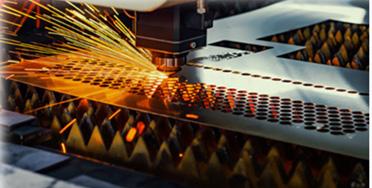



Smart Manufacturing and Processing
Smart Infrastructure
Robotics and Industrial Equipment
Heavy Machinery, Rail and Commercial Marine
Designing with these challenges in mind, Ansys software can accelerate the development process by reducing risk and saving costs with the help of five key digital scalers:
1. High-performance, multiphysics simulation
2. High-performance computing
3. AI/ML methodologies
4. Internet of Things (IoT), cloud and connected sensing
5. Digital engineering, comprised of model-based systems development, digital twins and datafused models
These five technologies together become a digital hyperscaling ecosystem, enabling engineers to develop, adapt, deploy, mature and scale engineering applications at a pace not yet achieved. Together with top industry partners and through the broader use of computational engineering combined with data science, we believe we can create accurate, detailed models of the systems and subsystems necessary to deploy and commercialise 5th generation industrial technology on a much faster time scale.
We also know that bringing AI together in generative design can lead to disruptive solutions. Applying these digital assets to manufacturing (sensitivity studies) and into operationally supportive digital twin applications, Ansys helps engineers build a larger return on the investment from digital assets that have historically only been used for design. This results in time savings, cost savings, more informed decision making and an overall enhanced end-to-end production experience.
As the physical and digital worlds converge to deliver the next industrial revolution, simulation is at the forefront: transforming physicsinformed data combined with sensor data, into accurate, invaluable insights. As the leading provider of multiphysics simulation software, Ansys enables innovators to drive human advancement.
Learn more at ansys.com.
CORE PHYSICS
NUMERICAL METHODS AND MODELS

• Solver methods
• Geometry and meshing
• Shape and topology optimisation
• Advanced analysis
• Multiphysics
• Multiscale
HIGH-PERFORMANCE COMPUTING

• Shared-memory
• Message-passing
• Fine-grained graphics processing units
• New architectures: field-programmable gate arrays and Al hardware
• Quantum computing
ARTIFICIAL INTELLIGENCE AND MACHINE LEARNING

• Solver acceleration
• Solver settings
• Top-down methods
• Bottom-up methods
• Reduced-order models
• Generative Al
CLOUD, PLATFORM AND USER EXPERIENCE

• Cloud enabled
• Cloud native
• Platform collaboration
• Open application programming interfaces and developer ecosystem
• Common user experience
• Internet of Things sensor connectivity and enablement

DIGITAL ENGINEERING

• Model-based system
• engineering
• Requirements and architecture connections
• Safety, security and software
• Digital twins
• Simulation process and data management
• Mission engineering

decade-old systems, for instance. This means we are looking for technologies and architectures that are resilient enough to endure extreme conditions and will be upgradable over the product’s life cycle. This means today’s digital technologies have to perform on platforms that come largely from the electromechanical age. This has serious impacts on the requirement
of the applied technology. Both have to perform under extreme conditions and must be easily replaceable for both maintenance and upgrades.
“On the other hand, today’s market innovation cycles require the industry to have technologies available in products in two to three years. Therefore, we’re initially looking for

a certain maturity in technologies, which we may adapt and improve to our specific needs.
“Digital engineering and collaboration are key to that. The industry is forced to work closely together in order to keep track of the market and develop optimised solutions. Therefore, the
development approach must adapt accordingly to a complete modelbased approach in all disciplines, enabling close cooperation with distributed teams. Model-based digital engineering enables those teams with different backgrounds or at different locations to design, develop and manage innovation in the most efficient way.
Elma’s global presence and expertise supports defence organisations worldwide in meeting MOSA requirements for ground combat vehicles. Elma stands at the forefront of implementing open standards computing solutions based on SOSA®, CMOSS, and OpenVPX across defence and commercial applications.

The adoption of the Modular Open System Approach (MOSA) established new paradigms with the CMOSS Mounted Form Factor (CMFF) for ground vehicle platforms. Elma is actively engaged with the Army in development efforts for manned and autonomous vehicle systems, bringing proven expertise to C5ISR, EW, SIGINT, and EO/IR mission-critical applications. This experience accelerates design cycles, ensures interoperability across international defence programmes, and assures resilience to the supply chain.
As industry-wide field trials continue to validate multi-vendor solutions, Elma anticipates rapid adoption of these open standards by global allied forces in the coming years. Our battle-
tested systems are ready to meet this growing demand.
With decades of experience in key open standards, Elma expertly guides defence programmes through their migration from legacy systems to modern VPX and SOSA aligned platforms. We ensure minimal disruption during new technology adoption, like AI-driven solutions, protecting existing investments while enabling future capabilities.

Elma delivers end-to-end solutions with our advanced product lineup. Proven CompacFrame development platforms, CMFF & SAVE compliant systems, rugged integrated ATRs, and custom man-pack comms systems are just a start. Our MORA Ready Platform accelerates RF design by saving hundreds of hours of development time. Each solution is designed with the warfighter in mind, using our deep knowledge
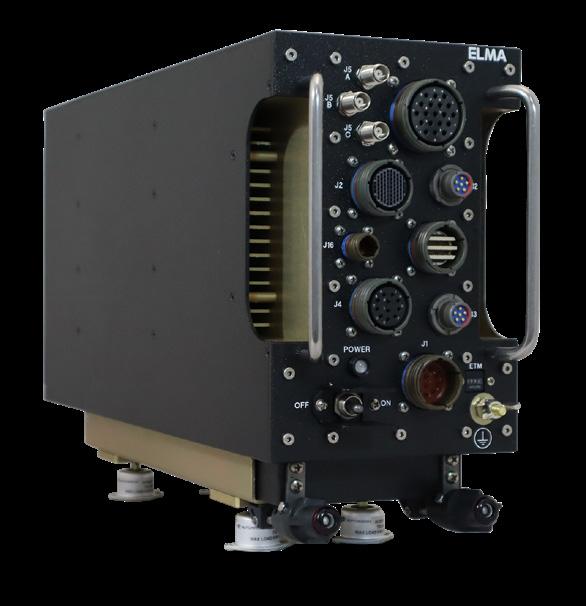


• Global leader in defence electronics & electro-mechanical solutions
» Standards-based platforms enable rapid integration
• Advanced packaging and cooling systems for harsh environments
» MIL-STD-810 qualified ruggedised solutions
» Sophisticated thermal management designs
of battlefield requirements and environmental challenges. Our sub-system integrations are backed by our long experience with card and software suppliers.

Our renowned Swiss-Click rotary switches and encoders are high-precision, with proven performance in the harshest conditions – simply the best available.
Our commitment to excellence spans every aspect of defence electronics, from advanced signal integrity in backplanes to innovative thermal management. Our MIL-STD-810
• Mission-critical computing systems for C5ISR and EW
• Worldwide engineering & procurement, local manufacturing and offset capabilities
• Extensive in-house testing capabilities (thermal, shock, signal integrity)
• Full lifecycle management across the lifetime of a project
enclosures ensure reliable operation in the harshest conditions, while our optimised I/O solutions meet the strict SWaP requirements of modern combat vehicles.
Our global footprint ensures that defence organisations worldwide receive expert support in their migration to modern open standards, backed by local engineering teams and global manufacturing. Elma is Your Solution Partner.
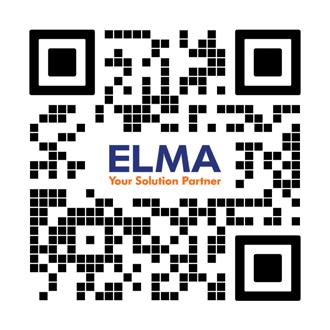
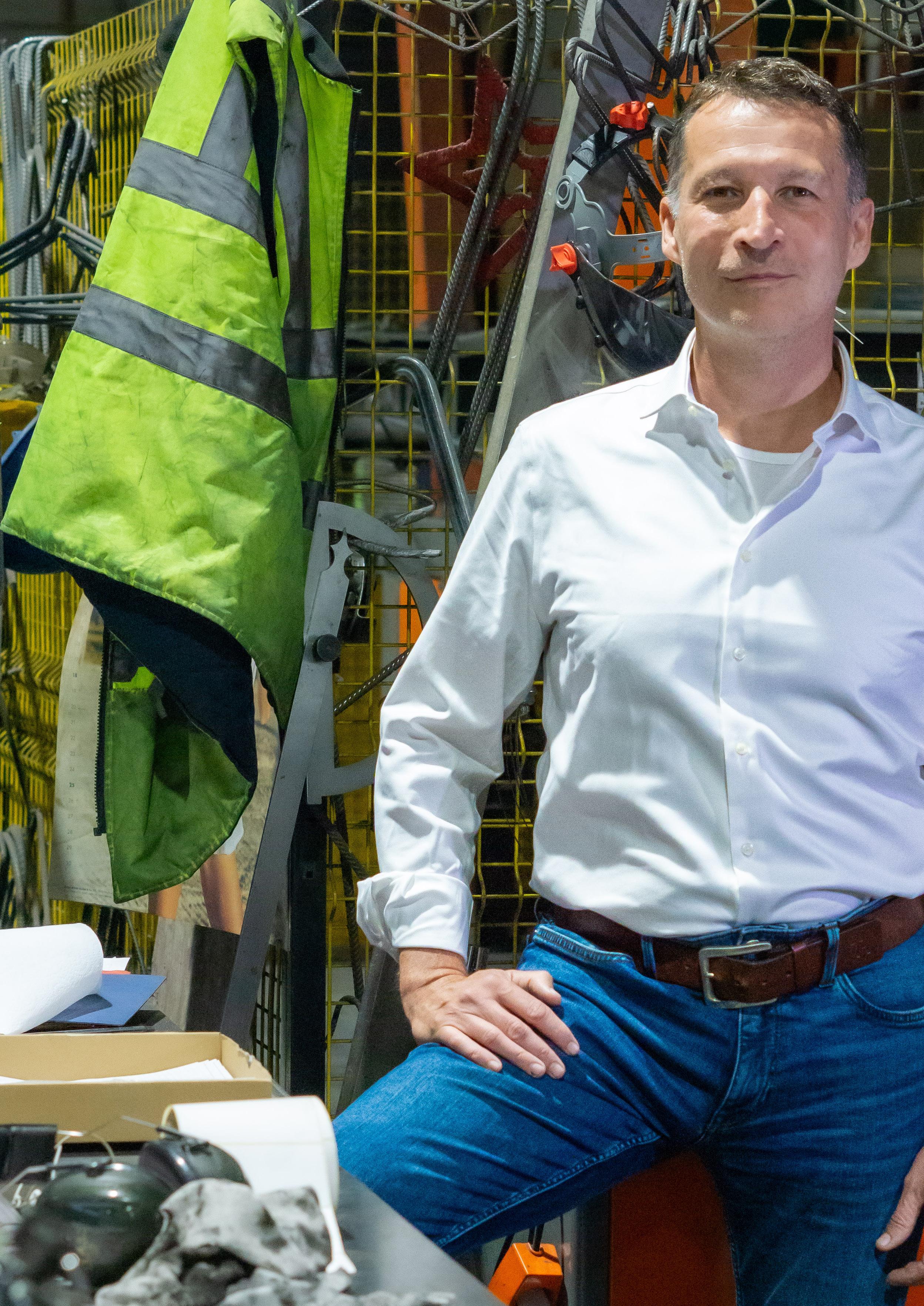
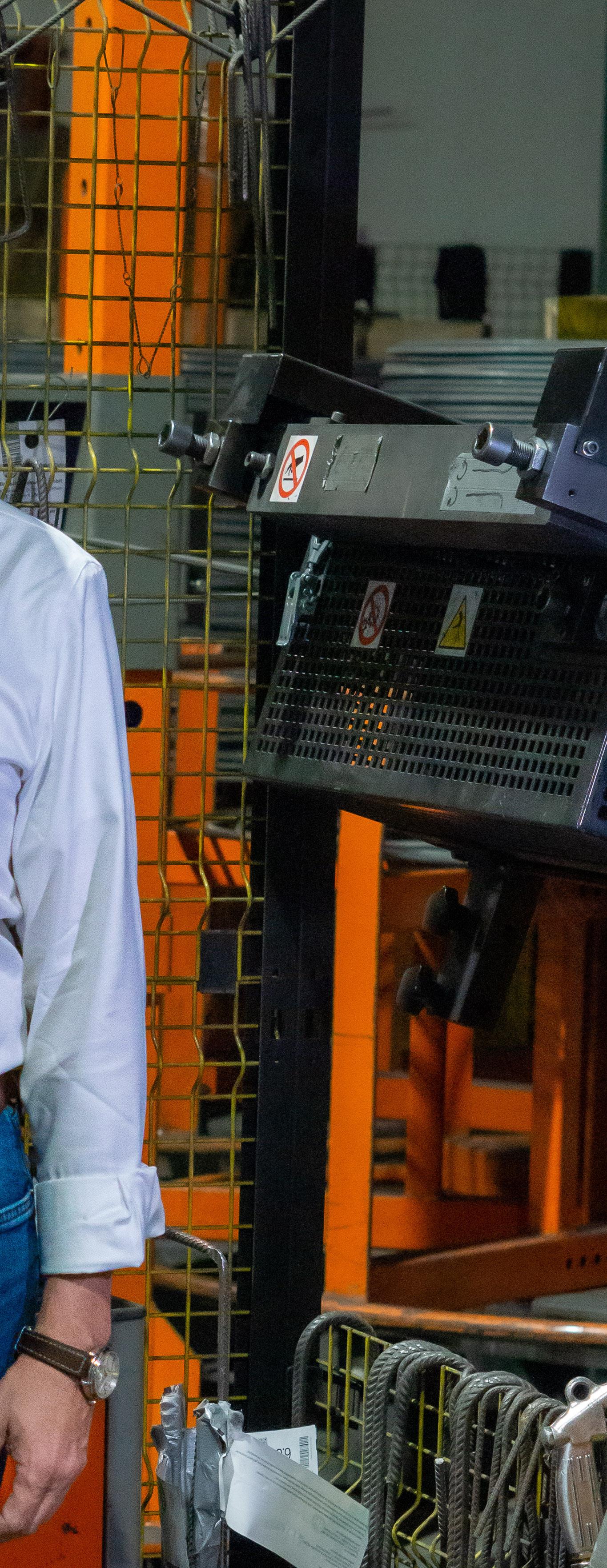
“there is an acute need to adapt to new threats early on with our products”
“While horizontal collaboration – the integration of external systems, subsystems or technologies from providers – is becoming a standard, vertical collaboration is relatively new. This requires the establishment of processes that allow for outsourcing the complete technology development to a certain maturity level to an external partner, while IP remains in-house. That’s been a real cultural change for the industry.”
By adopting new processes, defence sector businesses are better equipped to face industry-wide challenges – but Marc insists it’s also crucial to always look for new ways to encourage innovation.
“The shortage of skilled personnel on the market is a problem for the entire industry,” says Marc. “In addition to
“Preparation for swarm is a key task for the industry and comprises consistently expanding the fire chain from detection, recognition and engagement. This begins with AI-enhanced situational awareness, which recognises swarm attacks as such and alerts the user”
this, order backlog means that available resources are tied up in the operational business and focused on the successful completion of projects. At the same time, there is an acute need to adapt to new threats early on with our products.
“Because of this, I see it as most efficient to separate innovation and operational engineering, with a small team of innovation managers constantly preselecting promising technologies, then developing the most promising ideas to a certain maturity level.
“From there, implementation takes place with vertical development partners, who are flexible and understand the industries’ needs intimately and can use their expertise to create a minimal viable product (MVP) in a short space of time. That MVP will be the base to decide whether that technology should be pursued, or discarded. With this approach, we’re able to make decisions quickly, maybe even together with a potential customer and cover the maximum range of potential technologies.”
Making decisions quickly is critical in the defence industry, Marc stresses.
“One issue we’ve been dealing with is an increased number of possible threats,” says Marc. “If not already available from stock, hostile systems may be produced in masses due to short development and production cycles. Unmanned systems are a good example of this. Saturation becomes a threat at this point. These unmanned systems may be attacking in self-organising groups, they are referred to as swarms, increasing the threat level dramatically.
“Preparation for swarm is a key task for the industry and comprises consistently expanding the fire chain from detection, recognition and engagement. This begins with AIenhanced situational awareness, which recognises swarm attacks as such and alerts the user. It continues with the integration of new effectors that suitably complement existing systems against these threats and allow the operator to engage with a number of targets simultaneously.”
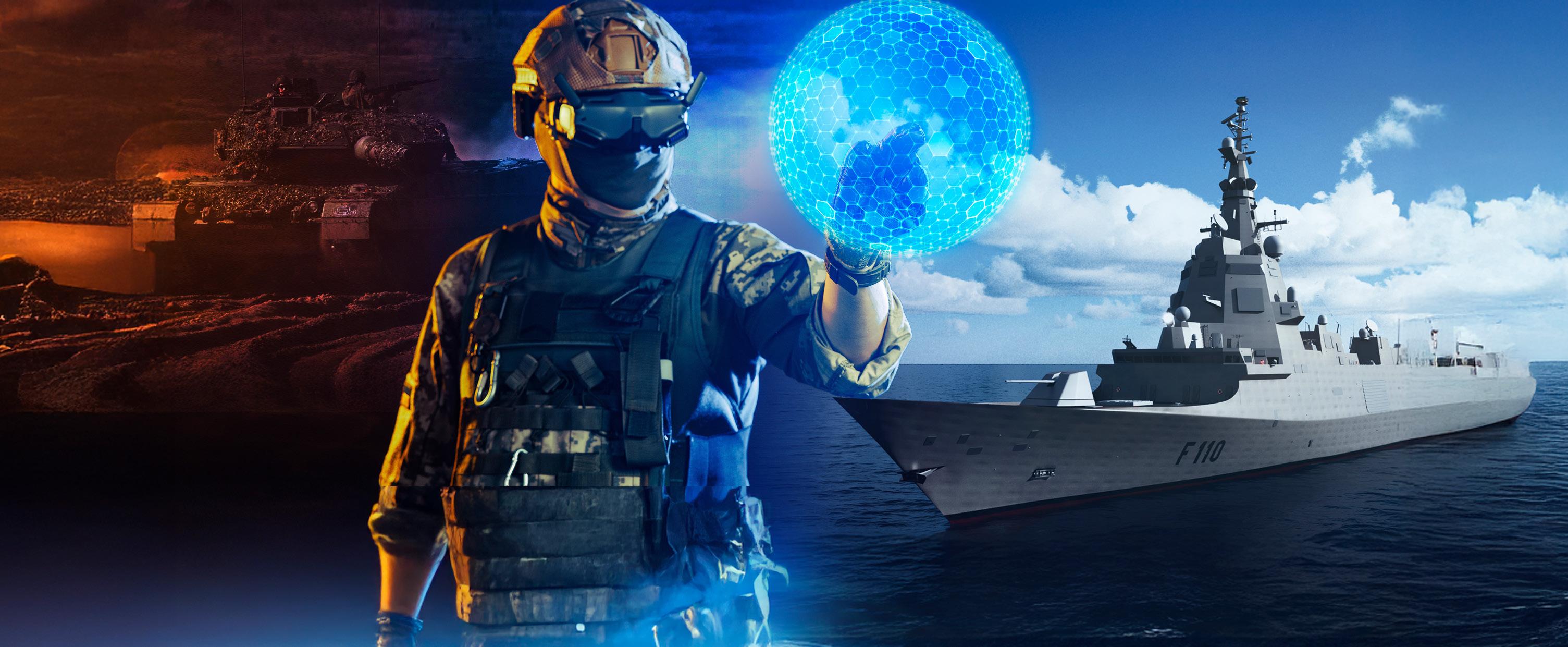
Grupo Oesía, a Spanish multinational company, dedicated to digital and industrial dual use engineering, develops and implements projects in more than 40 countries. In its commitment to hyper specialisation, it has five brands, each an expert in its area:
Tecnobit-Grupo Oesía: Innovating in Aeronautics, Space, Defence and Security dedicated to the design, development, manufacture and maintenance of cutting-edge technological products and solutions in smart vision, tactical data links and secure communications and simulation.
Oesía Networks: Smart solutions for digital transformation.
Cipherbit-Grupo Oesía: Cyber-security and Encrypted Communication for civil and military customers.
UAV Navigation-Grupo Oesía: multi-mission control, guidance and navigation systems for unmanned vehicles.
Inster-Grupo Oesía: SATCOM broadband connectivity in any location, vehicle or mission.
For almost 50 years, Grupo Oesía has operated on a global scale, collaborating with international defence organisations, NATO allies and leading industry partners. This global outlook allows them to anticipate emerging challenges and drive innovation, ensuring that their solutions remain at the forefront of technology.
The company integrates artificial intelligence (AI), big data analytics, and digital twin technologies into its solutions, ensuring continuous improvement in decision-making, predictive maintenance, and operational effectiveness.
It brings its expertise to some of the most advanced and strategic projects in the industry as supported by its participation in the main national and international programmes that drive the defence sector, such as: Eurofighter, A400M, F-18, VCR 8x8, Frigates F-110, FCAS, Eurodrone, Galileo PRS, Spainsat NG, etc.
International
In the field of simulation, the company is highly recognised due to its long-standing involvement in the Spanish Field Artillery Simulator (SIMACA), as well as the Brazilian SIMAF, the largest military simulator in Latin America, and the artillery simulator for the United Arab Emirates, known as SIMTAR.
In addition, the company provides interoperability and security for communications in any scenario, domain and mission. Its products enable simultaneous operation with multiple tactical data link protocols and provide communications with ad-hoc protocols.
Finally, with more than 30 years at the forefront of the market, its optronic systems provide mature, robust and reliable solutions to system integrators and platform manufacturers all over the world.



Exosens with its continuous innovation and commitment to offer advanced imaging solutions, proposes a diverse range of imaging technologies covering a large spectrum of light from below 300 nm Ultra Violet (UV) and up to 12,000 nm in the thermal spectral range Long Wave Infrared (LWIR).

According to Marc, AI has huge potential in partnering with human workers to best facilitate workflows.
“We can all agree that AI is a game changer in terms of future products and development,” notes Marc.
“So far, the biggest return on this technology that we’ve seen is in development itself. Even if creativity continues to come from human beings, AI is relieving us of repetitive and time-consuming tasks in programming, testing and simulations
– so engineers can make better use of their time.
“Now, we’re exploring how AI can help accelerate our workflows and enlarge our knowledge base. I am specifically focusing on the use of dedicated bots as a data source within our engineering teams. In this way, both, the engineering specific knowledge and general directives, as norms and standards are directly integrated in the development process. This is not restricted to software, but is now


entering to the electro- mechanical domain, where it will have massive impact.
“In the engineering workflow, AI will affect the way of developing further. For example, by adding the power of AI to our simulations, we’ll be able to accelerate the process of design and verification to a much higher level AI will help to make better and faster design decisions, as their effect can be analysed in depth in advance with much less testing and prototyping. In this way, I expect simulation to become an engineering standard skill, which will be foundational in the innovation process.
“In regard to future products, they will be equipped with AI as a standard –for example, to support interpretation of the situation. I see in the short term the greatest potential in AI-based assistants, supporting faster and more reliable planning, threat detection and precision engagement. AI will also impact the resilience of products by supporting maintenance, service and training personnel, by fulfilling their tasks and routines.
“In my view, the human operator remains in charge of the system for the short- and mid-term. In an engagement, AI cannot replace the operator, who retains the final decision. However, they will be supported in their decisions by AI in the future, in order to observe, orient, decide and act faster and more robustly in any environment.”
Closing off, Marc highlights how technology and tools support sustainable initiatives.
“Preservation and protection of the environment is crucially important to all of us, and a significant part of continuous improvement,” insists Marc. “Today, all products are systematically screened for materials of concern and comply with national and international standards and directives.
“Military system field tests are resource intensive. The digital workflow combined with simulations can have a massive effect on the carbon footprint. In the past, we field tested parts and systems repeatedly until the desired result was reached. This caused a lot of material and energy waste, as well as a waste of time and money.
“Today, a good part of the testing is done before we get to that point. Don’t get me wrong, field tests remain a necessity, but are reduced in scope primarily for fine-tuning and verification of systems – which has a much smaller footprint.
“Products also receive carbon-friendly upgrades. While the combustion engine remains relevant, electrical power supply units with battery packs are reducing carbon emissions besides offering operational advantages, such as reduced acoustic and infrared signature. I believe we will see more progress in the future.”


“My job brings me a lot of fulfilment, but outside of work, I always try to engage in things that bring me joy,” says Marc. “I’ve been trying to embrace new experiences there – such as travelling at least once a year to a completely new place.
“I love being able to immerse myself in new cultures, new landscapes and new ways of life. Last year, I went on an incredibly enlightening trip to Japan for four weeks, which has helped me to understand the country on a new level.”
“When it comes to unwinding, physical activity is crucial for me,” says Marc. “I go for a run three or four times a week, which helps me destress, get my focus back and maintain my overall wellbeing. There are always going to be times where I just need to recharge by doing as little as possible, but I’ve found that staying active in times of stress helps me feel like I’m coming back to my real self.”
“The DSEI London is one of the highlights for military technology every year,” says Marc. “I’ve attended for the past three years, and it’s always a very enjoyable experience. However, in 2027, there’s going to be a DSEI Germany for the very first time. This is something I couldn’t have imagined a few years ago, and it’s really encouraging to see how Germany is embracing this sector and this kind of industry event.”
Connect with Marc

Looming regulatory deadlines are driving CFOs’ compliance mindset.

DELOITTE AND BASWARE HAVE EXPANDED THEIR PARTNERSHIP WITH THE CREATION OF A PRACTICE-BASED
OF
SUPPORT ENTERPRISES
ACCELERATING
his expansion comes in response to increasing demand driven by largescale SAP S/4HANA migrations, heightened global e-invoicing compliance mandates and the need for cost optimisation through accounts payable (AP) automation.
By combining Deloitte’s deep finance and compliance expertise with Basware’s industry-leading Invoice Lifecycle Management platform, the alliance will deliver scalable and automated solutions for organisations in Europe, Middle East and Africa (EMEA) that enhance compliance, reduce costs and drive operational efficiencies.
Governments across the EMEA region are implementing stricter e-invoicing and tax compliance regulations, requiring companies to adapt quickly
or risk penalties, operational disruptions and increased costs.
At the start of this year, Germany introduced a mandate for companies to be able to receive e-invoices, with larger companies mandated to issue e-invoices by January 1, 2027. France plans to follow a phased roll-out from September 1, 2026, requiring the mandatory reception of e-invoices for all companies.
Through this expanded partnership, Deloitte and Basware’s COE will provide enterprises with a seamless, fully automated AP solution. This will ensure compliance while unlocking substantial financial benefits and operational efficiencies – chosen by hundreds of companies for AP as they migrate to S/4HANA, Oracle Fusion and other platforms.


“With regulatory pressures and the pace of digital transformation intensifying, businesses need to take immediate action to modernise their finance operations,” says Kevin Farrell, SVP, Business Development and Alliances at Basware. “By integrating Deloitte's expertise in finance transformation and the COE with Basware’s advanced Invoice Lifecycle Management platform, we deliver unmatched operational efficiency, ensure robust compliance, and drive
tangible financial success for our clients – helping them stay ahead of the curve.”
Accelerating compliance, reducing costs and futureproofing AP operations
The COE is already delivering project value to customers, further developing the joint go-to-market strategy to reach a wider audience of CFOs and finance leaders. This enhances

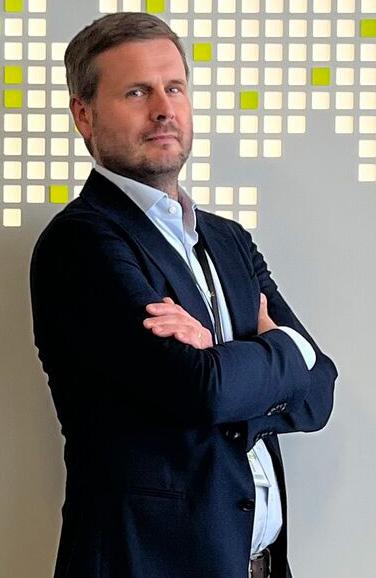
“Combining Deloitte’s reach and expertise with Basware’s AP automation capabilities, we empower the office of the CFO to streamline accounts payable, ensure full compliance, and unlock significant cost savings”
Henri Lhomme, Managing Partner, Head of Technology & Performance Management at Deloitte France


compliance innovation and the delivery of Basware’s solutions through Deloitte consultants.
“As regulatory pressures and digital transformation accelerate, businesses must act now to modernise their finance operations,” says Henri Lhomme, Managing Partner, Head of Technology & Performance Management at Deloitte France. “Combining Deloitte’s reach and expertise with Basware’s AP automation capabilities, we empower the office of the CFO to streamline accounts payable, ensure full compliance, and unlock significant cost savings.”
Through this expanded alliance, Deloitte and Basware will:
• Help enterprises achieve up to 89% touchless invoice processing, significantly reducing manual intervention and processing times.
• Ensure organisations stay ahead of evolving global and local e-invoicing compliance mandates without costly last-minute adaptations.
• Enable companies to capture early payment discounts, reduce fraud risk and optimise working capital –potentially saving millions annually.
• Provide a pool of Deloitte-certified consultants trained on Basware’s platform to drive successful financial transformation projects.

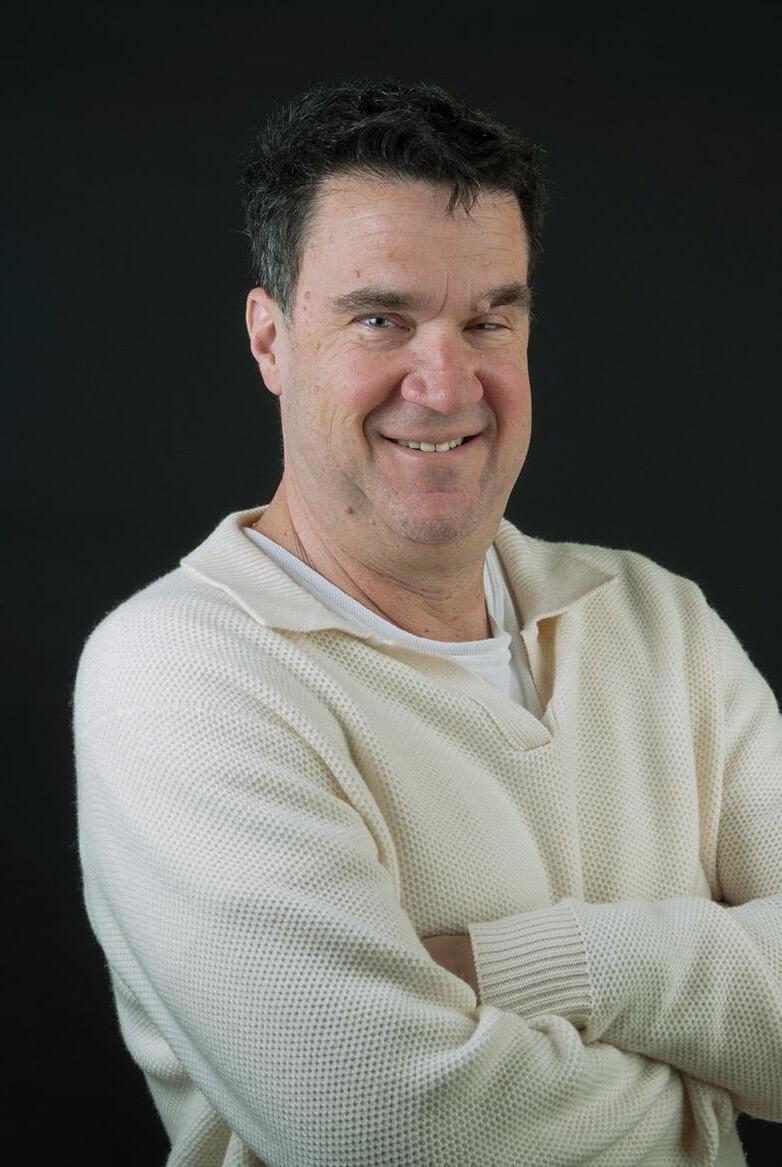
“Enterprise finance leaders can no longer afford to take a ‘wait and see’ approach to e-invoicing compliance and AP transformation”
Jason Kurtz, CEO at Basware

The power of this collaboration is already evident. Carglass France, a leader in automotive glass repair and replacement, successfully implemented Basware’s digital invoicing solution with Deloitte’s expertise – achieving full deployment in just seven months.
By integrating automation alongside its Oracle ERP migration, Carglass improved invoice-to-PO matching rates to 83%, accelerated supplier
payments by 55% and ensures seamless compliance with France’s upcoming e-invoicing mandates.
This success demonstrates how enterprises can future-proof financial operations and drive measurable efficiencies through the BaswareDeloitte alliance.
“Enterprise finance leaders can no longer afford to take a ‘wait and see’ approach to e-invoicing compliance
and AP transformation,” says Jason Kurtz, CEO at Basware.
“Regulatory deadlines are fast approaching, and the cost of inefficiency is rising. With the massive wave of ERP cloud migrations – especially to SAP S/4HANA - businesses need a seamless way to embed AP automation directly into their core financial operations.
“Acting now means mitigating compliance risks and improving cash flow, reducing fraud and eliminating manual bottlenecks. Our expanded alliance with Deloitte brings best-in-class automation and expert guidance to enterprises in EMEA, ensuring they gain a competitive edge while achieving compliance certainty.”
to drive competitive advantage and compliance at
With ERP migrations accelerating, and regulatory requirements tightening, enterprises in EMEA must act now to modernise their finance operations. The expanded Deloitte-Basware alliance helps customers to de-risk the ERP migration process provides the fastest, most efficient path to AP automation, compliance, and cost optimisation – helping CFOs, as well as CIOs, stay ahead in an increasingly complex financial landscape.



From addressing a global health crisis to a headband that reduces PMS symptoms, discover the most exciting innovations in women’s health.


oined in 2016 by
Clue Co-Founder
Ida Tin, the term femtech refers to products and services supporting women's health. This area of technological innovation has seen an explosion of growth in the past nine years, with the femtech market currently worth $52bn.
With so much happening in this sector, here are the six most exciting femtech startups to watch:



Founded by: Caroline Mitterdorfer and Silvia Hecher
With its automated patient triaging, Levy Health is streamlining the fertility journey for both patients and providers – reducing time to diagnose from years to weeks. The company uses Intelligence Amplification (IA) software built on the most recent medical guidelines to seamlessly analyse patient data and lab results, providing clear insights, diagnoses and treatment recommendations.
“We like to think of LEVY Health as a virtual care coordinator for fertility clinics,” says Caroline. “Our platform takes care of everything from diagnostic work-ups to patient education, allowing providers to focus on treatment planning as early as the first consultation.”
Learn more about Levy Health here.


Founded by: Rachel Blank
After years of struggling with unexplained health issues, Allara Health founder Rachel Blank was diagnosed with polycystic ovary syndrome (PCOS). With up to 70% of people affected by this condition remaining undiagnosed, Rachel found that her long journey to diagnosis was a common one, with many women feeling alone and frustrated. With this in mind, she decided to build Allara Health.
The collaborative care platform provides users with a personalised care plan based on lifestyle, nutrition, exercise and medical expertise –offering more efficient access to diagnosis and treatment.
“Women's health is often misperceived as limited to pregnancy and fertility, failing to acknowledge the intricate web of health conditions that affect women’s daily lives and long-term health,” says Rachel. “At Allara, we finally take the burden off the patient to navigate a siloed care system and empower her with a whole-body, preventative approach to her health.”
Learn more about Allara Health here.


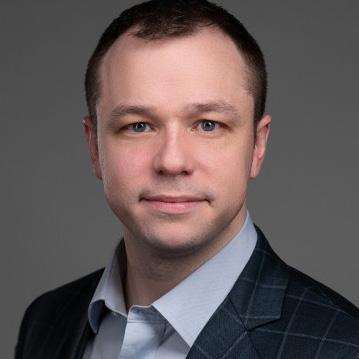
Founded by: Scott Johnson, M.D. and Mike Young
Despite more than 50 years of medical research seeking a cure, preeclampsia is a public health crisis affecting over 10 million women every single year. Comanche Biopharma was founded to tackle this crisis. The pharmaceutical manufacturing startup is currently developing an investigational small interfering RNA (siRNA) medicine designed to reduce sFlt1 – a protein occurring at dangerously high levels in women with preeclampsia.
“Tragically, millions of pregnancies are affected by preeclampsia, contributing to the escalating maternal mortality crisis,” says Allison August, M.D., Chief Medical Officer at Comanche Biopharma. “The only current effective intervention to initiate recovery from preeclampsia is premature delivery of the infant, a decision fraught with significant risk of shortand long-term complications for the baby.
“This stark reality, leading to over 500,000 infant fatalities annually worldwide, especially in regions with limited access to neonatal intensive care units, underscores the critical need for an effective treatment – a need our team is acutely aware of and is fully committed to addressing.”
Learn more about Comanche Biopharma here.



Founded by:
Dr Helen O’Neill, Deirdre O’Neill and Dr Natalie Getreu
Hertility Health (Hertility) is on a mission to shape the future of reproductive healthcare. With women’s health conditions remaining under-researched, Hertility is setting a new standard of scientific rigour. This startup has built the largest global dataset on female reproductive health, and is using that data to provide personalised insights and treatment to patients – all from the comfort of their own homes.
“We live in a society that expects us to tolerate pain and mask our symptoms,” says Helen. “Some women spend over ten years on their contraception, never fully knowing if there might be something wrong.”
By putting reproductive health back in the hands of the people it affects, Fertility is empowering women to make more informed decisions about their health.
Learn more about Hertility Health here.



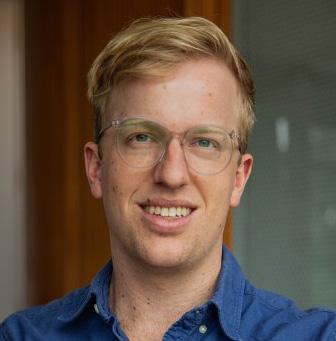
Founded by:
Emile Radyte and Alex Cook
Samphire Neuroscience’s innovative wearable tech is empowering women to make more informed decisions about their health. The startup’s most exciting product is Nettle, a neurotechnology headband that sends out targeted pulses, mimicking the brain’s activity during the follicular phase and delivering PMS relief.
This technology is now being adapted by the company to encompass a wider range of medical issues, with the introduction of clinical trials for people with PMDD and endometriosis.
“Women’s health has been notoriously under-researched and underfunded for decades,” says Emilė. “As a result, women have been expected to compromise when it comes to taking care of their minds and bodies. What we’re doing is approaching things differently – with the brain as the nexus of health.
“A number of scientific studies have highlighted the potential of brain-based therapies. Mental and physical well-being are essential components of a complex system governed by the brain, and unlocking that system’s capabilities will lead to breakthroughs beyond our current understanding, and Samphire is going to help forge that path.”
Learn more about Samphire Neuroscience here.



Founded by: Andrea Berchowitz and Dr. Rebecca Love
Vira Health was founded to help women access high-quality care during the menopause. Since being founded five years ago, the healthtech startup has partnered with some of the world’s leading healthcare organisations to support over 2 million women.
Stella – the company’s menopause solution and core product – takes advantage of 90 clinical data points to provide hyper-personalised care. This ensures safe prescribing while adapting to the individual patient’s needs.
“Menopause is a time point in a woman’s life where we can fundamentally change the trajectory of lifelong health,” says Rebecca. “It is outrageous that we have not focused on menopause care more. Stella provides women the relief and support they need for symptoms such as sleep issues, incontinence, mood swings, hot flushes and many others, and helps set women up for better brain, bone and heart health in later life.”
Learn more about Vira Health here.

The need for immersive technologies will reshape business strategies and drive seamless integration across industries.

THE GLOBAL ENERGY INDUSTRY IS UNDERGOING TRANSFORMATION DRIVEN BY DECARBONISATION AND DECENTRALISATION – LEADING TO INCREASED DIGITALISATION AND THE UTILISATION OF
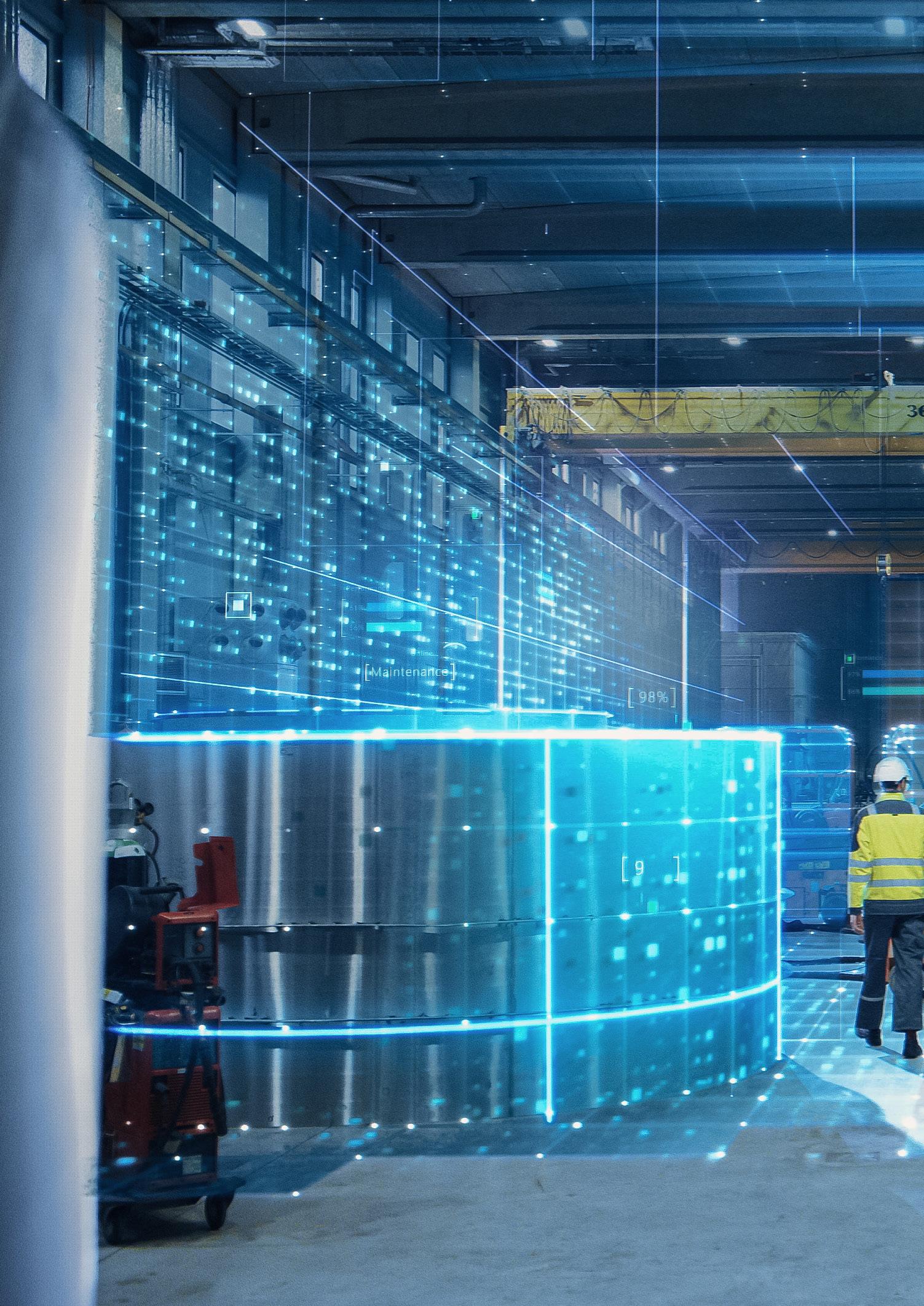
ver the past three years, the foundations of the virtual reality (VR) and augmented/mixed reality (AR-MR) markets have become stronger, with major companies investing billions of dollars to stimulate the growth of these technologies.
Extended reality plays a crucial role in the energy sector's digital
transformation, offering users immersive experiences within intricately designed 3D virtual environments. This integration of immersive technology is changing how industry professionals interact with complex data and processes, ultimately leading to innovative solutions and improved efficiency in energy management and operations.
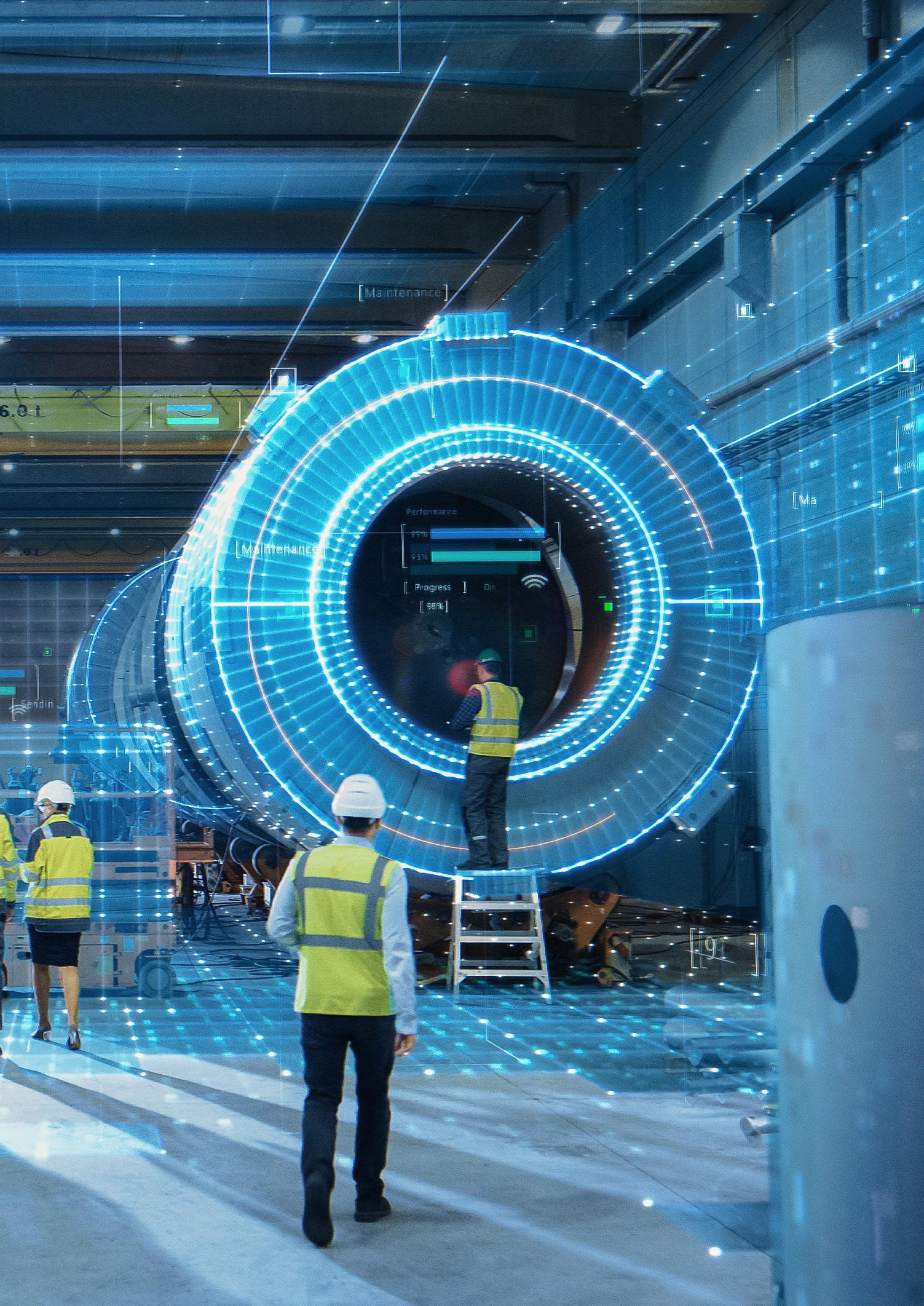
A growing market with extensive potential for partnerships and collaboration
According to insights by business consultancy firm Frost & Sullivan, the VR/AR-MR markets are set to grow significantly. This forecasted growth is fuelled by continuous advancements in immersive technologies, and the increase in both consumer and business interest.

The full potential of industrial extended reality (XR) hardware lies in its adaptability to diverse applications. Unlike consumer solutions, industrial XR often requires customisation for specific sectors such as energy.
Collaboration across the industry is essential to unlocking this potential. By developing specialised software development kits (SDKs) and

“INTEGRATING CROSS-INDUSTRY SOLUTIONS IS CRUCIAL FOR SUCCESSFUL XR IMPLEMENTATIONS IN THE POWER AND ENERGY SECTORS”

advanced functionalities, stakeholders can ensure the seamless integration of XR technologies into existing workflows and infrastructure – driving innovation and efficiency across industrial domains.
Integrating crossindustry solutions is crucial for successful XR implementations in the power and energy sectors.
Leveraging advanced technologies such as AI analytics, digital twins, process simulations and XR platforms enables companies to simulate asset operations in real time. This approach supports informed decision-making, enhances operational efficiency and mitigates risks.
Digital twins, for instance, can facilitate the integration of distributed energy resources (DER) into the grid, enhancing the operation of generation


and storage assets and delivering enhanced customer experiences. By adopting these innovative tools, the power and energy sectors can drive greater resilience, sustainability, and performance.
“Our annual survey of IT decisionmakers revealed that 58% of respondents possess a high or moderate level of expertise in immersive digital services within the energy sector,” says Lucrecia Gomez, Global Power and Energy Research Director at Frost & Sullivan. “As the industry matures and the demand for ER continues to rise, the visibility and adoption of these technologies will quickly increase across organisations worldwide.
“The majority of organisations (62%) are actively engaged in small, medium or large-scale trials and proof-of-concept projects involving immersive digital services. Among these technologies, mixed reality (MR) stands out, capturing the highest level of interest, with 20% of respondents expressing that they are very or extremely interested in its applications.”

Looking ahead, AR and MR are expected to gain significant traction across various business use cases, including data centres, oil and gas, solar photovoltaics and nuclear power, among others. These technologies hold immense potential to drive innovation and efficiency in the energy sector.
SOURCE: Frost & Sullivan




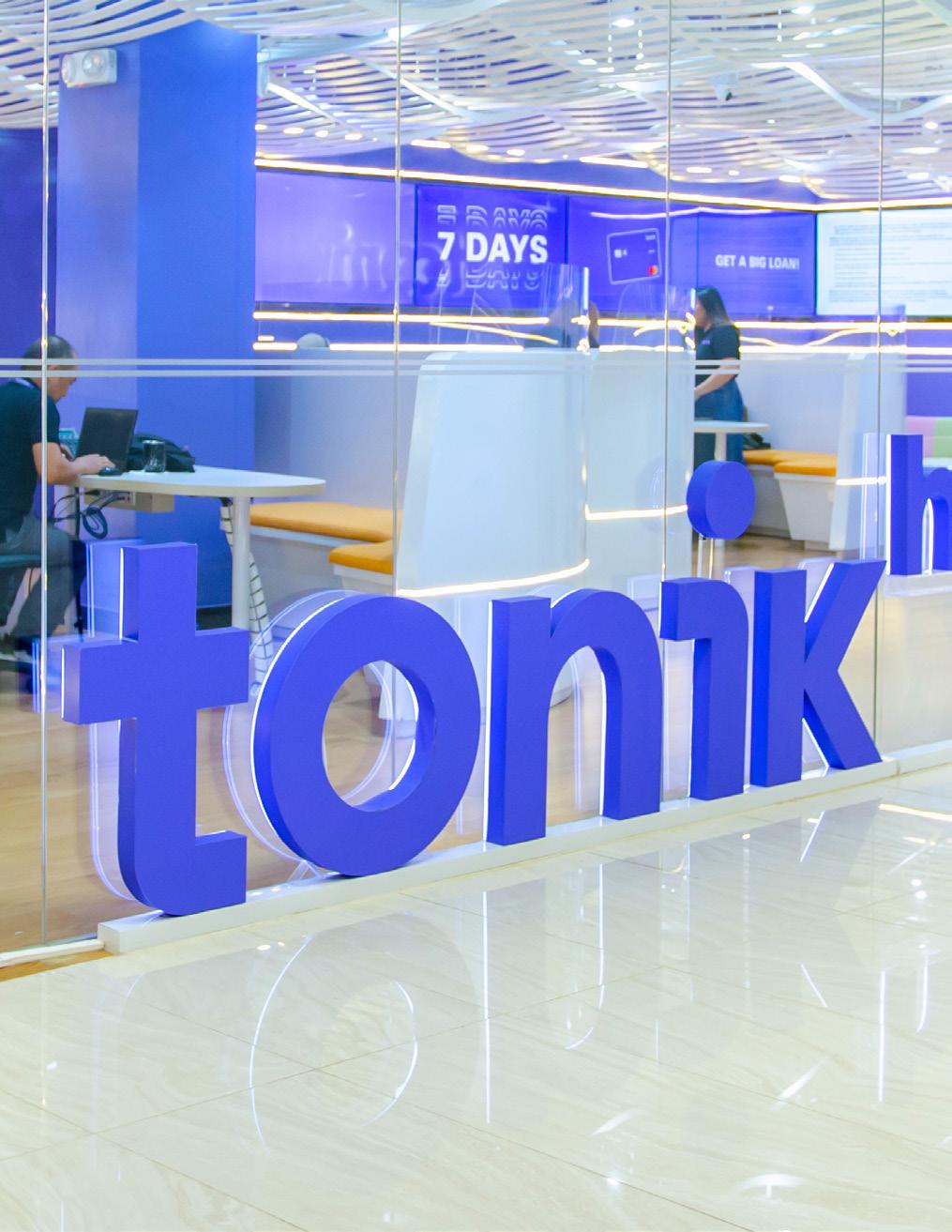




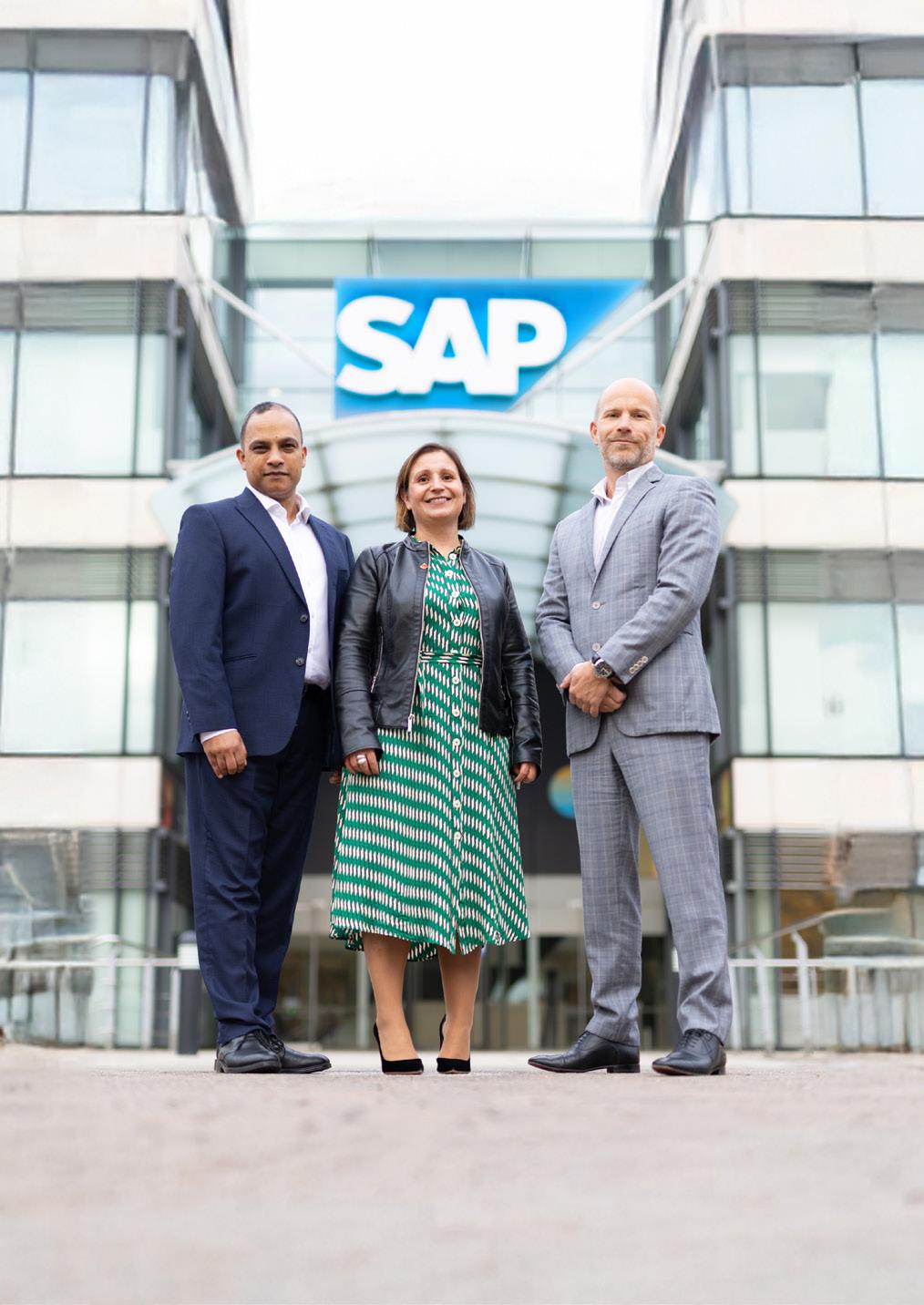





"The team were professional and diligent throughout"
Leigh Feaviour, CTIO for BT’s Supply Chain
"Absolute pleasure working with the Digital Innovation team"
Mun Valiji, Chief Information Security Officer at Sainsbury’s
"A highly professional approach"
Andy Brierley, Vice President, Cloud Application Modernisation at IBM
"Digital innovation Magazine is a very flexible and professional team"
Kim Larsen CTIO, T-Mobile Netherlands



The funding is a part of the Advanced Research Projects Agency-Energy (ARPA-E) programme to enable transmutation of the commercial nuclear stockpile.
Next-generation fusion company SHINE Technologies (SHINE) was recently selected to received funding from the US Department of Energy’s Advanced Research Projects Agency-Energy (ARPA-E).
his funding is part of the Nuclear Energy Waste Transmutation Optimised Now (NEWTON) programme – a programme developing advanced transmutation technologies to reduce the mass, volume, activity and effective half-life of the existing stockpile of commercial used nuclear fuel (UNF).
Across its 11 projects, the NEWTON project aims to turn the intergenerational challenge of UNF disposal into something that can be managed today.




“Spent nuclear fuel contains significant untapped energy potential. Our REDUCE method represents a transformative approach to nuclear waste”
Ross Radel, CTO of SHINE Technologies

As a part of this initiative, SHINE is developing its Recover Elements –Destroy Undesirables – Create Energy (REDUCE) method. This innovative process focuses on reducing the volume, longevity and hazards of nuclear waste while recovering
valuable materials, such as uranium and plutonium, for advanced reactor fuel.
Residual waste will be transmuted into less hazardous forms using a molten salt target coupled to an external neutron source. By advancing simulation, laboratory testing and design, SHINE's approach



“NEWTON technologies aim to use transmutation to shorten UNF disposal timelines and reduce the long-term costs of disposal facilities”
Evelyn N.
Wang, MIT professor and former ARPA-E Director
demonstrates the potential to significantly reduce the environmental impact of nuclear energy generation.
“Spent nuclear fuel contains significant untapped energy potential,” says Ross Radel, CTO of SHINE Technologies. “Our REDUCE method represents a transformative approach to nuclear waste. By recovering valuable elements and transmuting remaining materials, we’re developing a more sustainable cycle for nuclear energy – one that creates value while minimising environmental impact.”
“Nuclear technology is essential to meeting our nation’s rapidly growing power needs, but UNF is a
complicated and expensive part of the equation,” says Evelyn N. Wang, MIT professor and former ARPA-E Director. “NEWTON technologies aim to use transmutation to shorten UNF disposal timelines and reduce the longterm costs of disposal facilities. This would also help reduce the price of this valuable source of baseload power.”
Nuclear power provides nearly 20% of US electricity as the country’s largest carbon-free energy source. With 90,000 tonnes of spent nuclear fuel stored across the country, SHINE’s REDUCE method under the ARPA-E

NEWTON programme represents a crucial technological advancement for sustainable nuclear energy.
Through strategic partnerships with companies such as Zeno Power, Orano and Deep Isolation, SHINE is building an industry coalition to transform nuclear waste management.
The REDUCE method complements these efforts by focusing on volume reduction and transmutation, reinforcing SHINE’s role as a leader in nuclear innovation. These technologies not only reduce nuclear waste but unlock its potential as a resource, representing a significant step forward in creating a sustainable and carbon-free energy future.

Source: SHINE Technologies LLC
Google has recently announced for Startups Growth AI for Cybersecurity

announced the 2025 Google Growth Academy: Cybersecurity Cohort.


bennymarty - stock.adobe.com
THE CYBERSECURITY INDUSTRY IS BROADENING ITS USE OF AI SIGNIFICANTLY TO HELP DEFEND COMMUNITIES, GOVERNMENTS AND USERS AGAINST POTENTIAL THREATS.

ecognising the importance of this technology, Google has recently announced the third cohort for its Google for Startups Growth Academy: AI for Cybersecurity programme. These startups will receive Google mentorship, training and resources to help them further scale their AI-powered solutions.
Turn over to learn more about the 2025 Growth Academy: AI for Cybersecurity cohort below:
Cyber resilience and risk management platform Steryon helps organisations better understand and manage cyber risks within their operational technology envrionments.

This cloud security startup uses AI to find and prioritise risks, respond to incidents and help businesses scale.

By evaluating LLM-based applications in real time, Qualifire ensures safety, reliability and compliance.
Founded with a mission to protect human authenticity, DeepTrust helps protect against deepfakes and social engineering with real-time identification and training.


By using AI to automate phishing simulations and training, Moxso is helping to build a strong culture of security.

Using a fake network environment, CounterCraft lures away potential cyber risks and provides real time threat intelligence.

Offering data security and privacy for AI-focused fintech organisations, Wodan AI empowers users to build and deploy AI solutions with confidence.

Application security startup Equixly provides API penetration testing that focuses on finding and managing critical security risks.

By providing a platform for researching cybersecurity vendors and products, IT-Harvest is making it easier to identify prospective investments, partners and acquisitions.

AI-powered cybersecurity platform System Two Security automates threat detection and response.

The only combined protection and compliance platform on the market, Qalea uses AI automation to simplify security management.
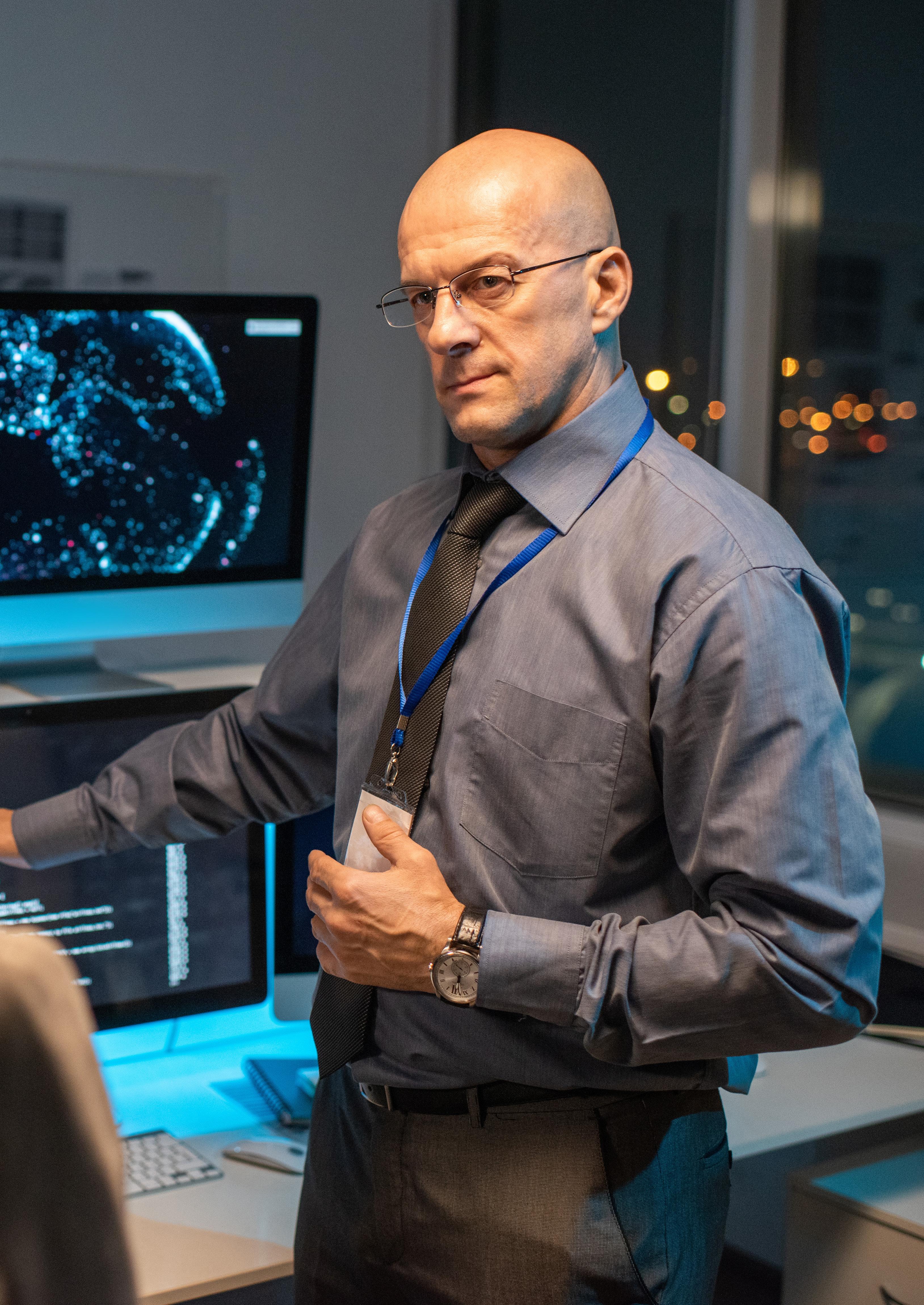
Device security solution XFA seamlessly identifies devices used in an organisation, informs users about potential risks and verifies compliance.

With its innovative platform, ESProfiler is helping optimise security investments and maximise product adoption.


Continuous security verification platform Mitigant provides comprehensive security for cloud-native infrastructure.

By connecting apps to existing security systems, Cerby eliminates manual workarounds and improves security compliance.
Next-gen solutionist ecosystem Secretarium provides a secure and auditable environment for running applications with sensitive data.
Source: Google







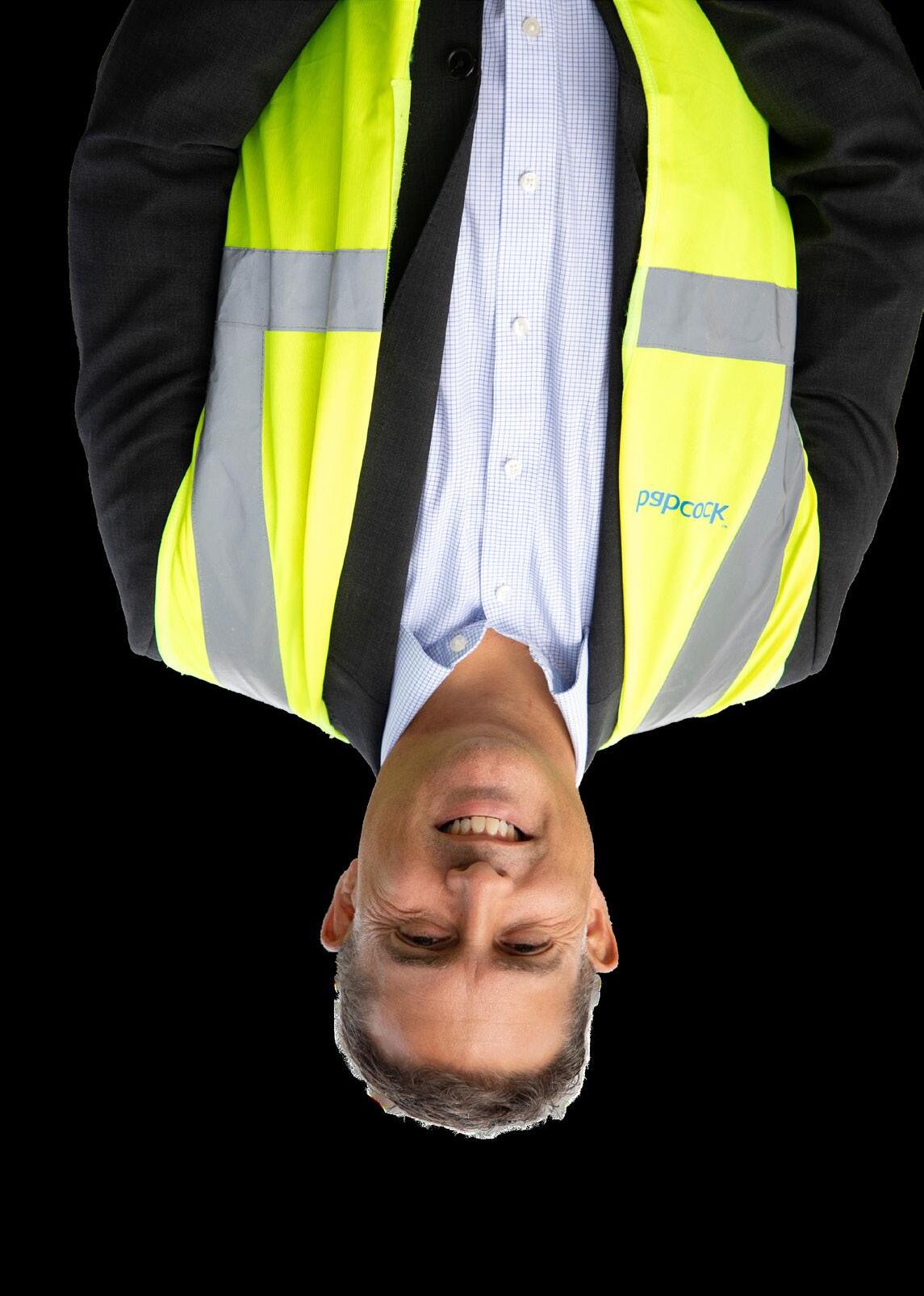





















Key insights from Info-Tech Research Group’s latest report.

Info-Tech Research Group has recently published its Applications Priorities 2025 report, detailing the key priorities
he global research and advisory firm’s report has identified five critical priorities that IT leaders need to address to remain adaptive and resilient in this unstable and dynamic industry.
“The importance of aligning application strategies with business objectives is particularly critical for organisations across the UK, where evolving customer expectations, the potential impact

of AI and regulatory pressures are reshaping the digital landscape,” says Phil Brunkard, Executive Counselor at Info-Tech Research Group, UK. “By embracing democratised AI, improving data accessibility, and modernising legacy systems, IT leaders can drive innovation, control costs and enhance operational efficiency, ensuring their organisations remain competitive in an increasingly complex environment.”

In particular, the report emphasises that IT leaders must balance user empowerment with governance and scalability – enabling innovation while mitigating risks. With users increasingly demanding greater control over their tools and data, organisations need to adopt

democratised IT practices, explains Andrew Kum-Seun, Research Director at Info-Tech Research Group and lead author of the report.
“Applications are no longer just tools – they’re strategic enablers,” says Andrew. “Organisations must
“Applications are no longer just tools – they’re strategic enablers”
Andrew Kum-Seun, Research Director at Info-Tech Research Group and lead author of the report.




align their application strategies with business objectives to ensure they deliver value, foster innovation and remain adaptable in the face of rapid change. By addressing critical issues like technical debt, data quality and user empowerment, IT leaders can unlock new opportunities and drive sustainable growth.”
Info-Tech’s report insights: The key priorities for applications leaders in 2025
According to the report, these are the five priorities critical for IT leaders seeking to build scalable and user-centric application strategies:
Turn over for the five five priorities >


1 2 3
Organisations must create engaging and valuable digital experiences for users, customers, employees and partners, including designing usercentric, adaptable and secure products that align with evolving customer needs and market trends.
Modern platforms must serve as scalable, interoperable ecosystems that empower users to build, customise and extend solutions. Effective platform management and orchestration ensure accessibility, reliability and adaptability.

By extending AI to all employees, organisations innovation and across the enterprise. Democratised robust governance, accessible tools strategies for scaling adoption.



Democratised
AI access employees, can foster and productivity enterprise.
AI requires governance, tools and scaling AI

4
5

Expanding access to trusted data sources and analysis tools empowers employees to make informed, datadriven decisions. Data literacy initiatives and comprehensive governance are critical to maximising the value of organisational data.
Scaling business automation requires optimising roles, processes and technologies to improve efficiency and reduce manual intervention. By adopting end-to-end optimisation strategies, organisations can drive better outcomes across workflows.

Info-Tech’s report also explores the disruptors and challenges IT leaders face as they navigate the complexities of modern application management. These key issues include:
Technical debt:
Poorly managed technical debt can lead to inefficient systems and hinder innovation. Addressing technical debt is essential for maintaining flexibility and scalability.
Data quality:
Inaccurate or incomplete data undermines decision-making, automation and compliance efforts. Organisations must prioritise data quality through governance, strategy and technology investments.
User expectations:
With the rapid evolution, accessibility and availability of applications, users are demanding more control and expecting more from their applications.
Balancing user empowerment with governance is a growing challenge for IT teams.
“The rapid evolution of exponential technologies like generative AI has created both opportunities and risks for IT leaders,” says Andrew. “By embracing user-centric design, enhancing data accessibility, and fostering collaboration across the enterprise, organisations can position themselves for success in 2025 and beyond.”

Source: Info-Tech















Innovation Magazine is a specialist technology platform with over 166,700+ readers.
Our community consists of C, V and D level executives from a wide range of industries. A unique blend of thought leadership interviews and features that cover digital transformation, cloud & cyber, enterprise IT, artificial intelligence, machine learning and sustainability.



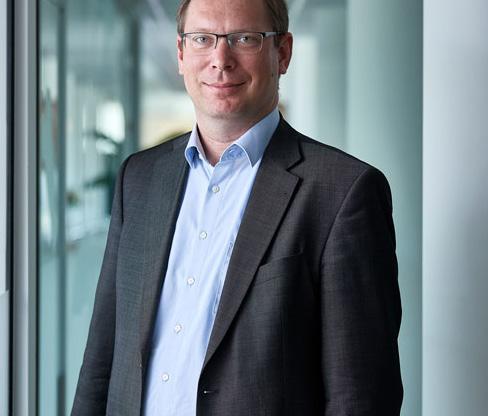
Demand



Webinars - Hosting & Promotion



Team up with Innovation Magazine and build media programs that deliver.
Find out more

How the SaaS buying platform is empowering buyers and streamlining pricing negotiations.
ith software pricing negotiations often taking weeks to close due to endless back-and-forth, the buyer experience can be challenging and slow down the process of new innovations. However, SaaS startup

Ryan Neu Founder and CEO of Vendr
Vendr is looking to make this process seamless – reshaping the software procurement landscape with a new way to buy and sell software.
Founded in 2018, the company’s mission is to provide buyers with fair, fast and easy access to competitive software pricing. As the category creator and leader, Vendr empowers SaaS buyers everywhere by acting as an extension of whichever team is in charge of the software stack.
The software startup provides pricing transparency and speed, offering a new level of purchasing control for buyers. Sellers can also benefit from Vendr, by accessing their qualified buyers, reducing sales cycles and increasing buyer trust.
“Now, buyers can access the best software at competitive rates, transact instantly, and track all of it in one place, aligning with our vision of being the modern channel to buy and sell software” - Ryan Neu
Step 1
Provide purchase details and a quote if you have one

Step 2
Vendr will tell you the fair price range, or if you already have a price we will validate if it's low or not

Step 3
Vendr makes money through a small transaction fee, paid by seller partners

Recently, the company announced a partnership with AWS in the form of its new ‘Buy with AWS’ integration. This allows customers to discover and purchase software available in AWS Marketplace from Vendr’s website. Post-purchase, customers can take advantage of centralised AWS billing and cost optimisation tools.
“This integration marks a pivotal moment in our mission to simplify software buying,” says Ryan Neu,
Founder and CEO of Vendr. “With Buy with AWS, we aim to eliminate friction for software buyers who need access to fair prices and a smooth purchasing process. Now, buyers can access the best software at competitive rates, transact instantly, and track all of it in one place, aligning with our vision of being the modern channel to buy and sell software.”
Learn more about Vendr here.
